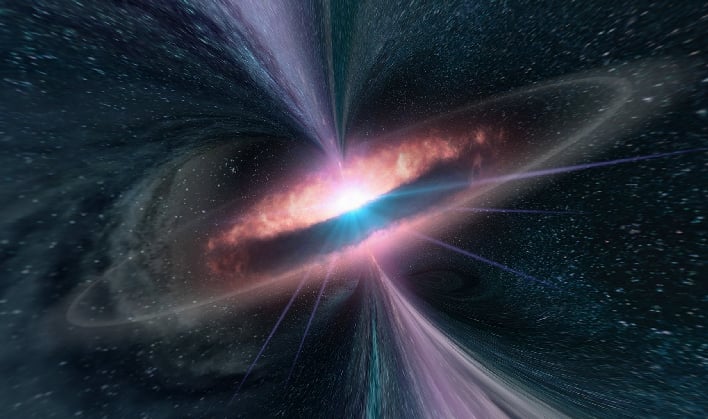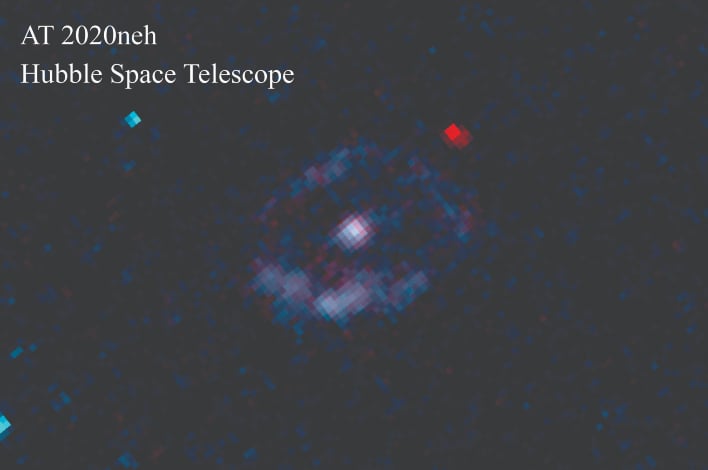Astronomers Can't Look Away As A Newly Discovered Black Hole Violently Devours A Star

One theory for how massive black holes came to be, is that the early universe was full of small dwarf galaxies with intermediate-mass black holes. Over the course of time, dwarf galaxies were taken over by larger galaxies. With each merger, the galaxies would continue to grow in mass, eventually creating the supermassive black holes we know today. Scientists hope that by better understanding intermediate-mass black holes, they can determine if current theories of how supermassive black holes form are correct.
The flare which occurred while the black hole consumed the neighboring star was captured by astronomers with the Young Supernova Experiment (YSE). An international team led by scientists at UC Santa Cruz, the Niels Bohr Institute at the University of Copenhagen, and Washington State University notated the discovery in a paper published on November 10, 2022, in Nature Astronomy.

The recent discovery has created "widespread excitement" because tidal disruption events can be used to find more intermediate-mass black holes in quiet dwarf galaxies and measure their mass as well, according to co-author Ryan Foley.
Enrico Ramirez-Ruiz, a professor of astronomy and astrophysics at UCSC, added it is difficult to say whether or not all dwarf galaxies have midsize black holes. This is due to how hard it is to detect black holes in the center of dwarf galaxies, resulting in only a very small amount of dwarf galaxies being known to host intermediate-mass black holes. Being able to find more midsize black holes with tidal disruption events could help settle the debate concerning how supermassive black holes form.
"One of the biggest open questions in astronomy is currently how supermassive black holes form," explained co-author Vivienne Baldassare, professor of physics and astronomy at Washington State University.

